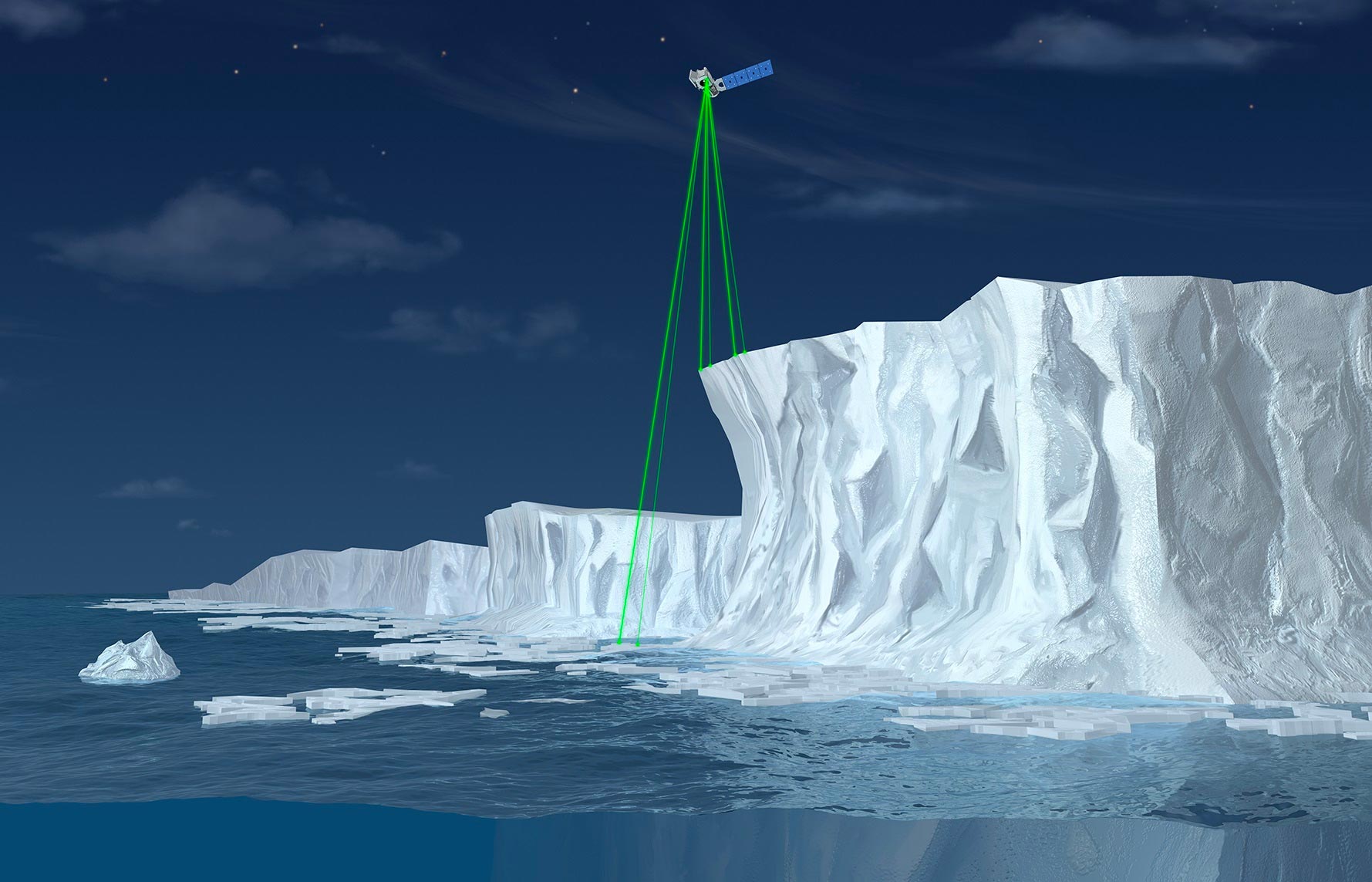Follow us on Google News (click on ☆)

Illustration of NASA's ICESat-2 satellite, a mission aimed at measuring changes in Earth's ice.
Credit: NASA
Between May 7 and 11, a series of solar flares and coronal mass ejections triggered a geomagnetic storm, causing the Earth's atmosphere to swell. This phenomenon created an unexpected atmospheric drag on the ICESat-2 satellite, forcing it into safe mode to protect its sensitive instruments while causing it to lose altitude.
To address this situation, the ICESat-2 team performed two maneuvers to raise its orbit. These actions aim to reduce atmospheric drag and bring the satellite back to its normal orbit, approximately 310 miles (500 kilometers) above Earth. Once the correct altitude is restored, the satellite's primary instrument, the ATLAS (Advanced Topographic Laser Altimeter System), will resume its valuable observations of the Earth's surface.
Launched in September 2018, ICESat-2's main mission is to measure ice elevation and sea ice thickness, as well as land topography and vegetation characteristics. With its high-precision laser altimeter system, ICESat-2 provides crucial data for understanding climate change, particularly the variations of ice sheets and glaciers.
These high-resolution data are essential for scientists. They not only enable more accurate predictions of future sea level rise but also allow for the assessment of changes in terrestrial ecosystems. The return to normal operations for ICESat-2 is eagerly awaited by the scientific community.